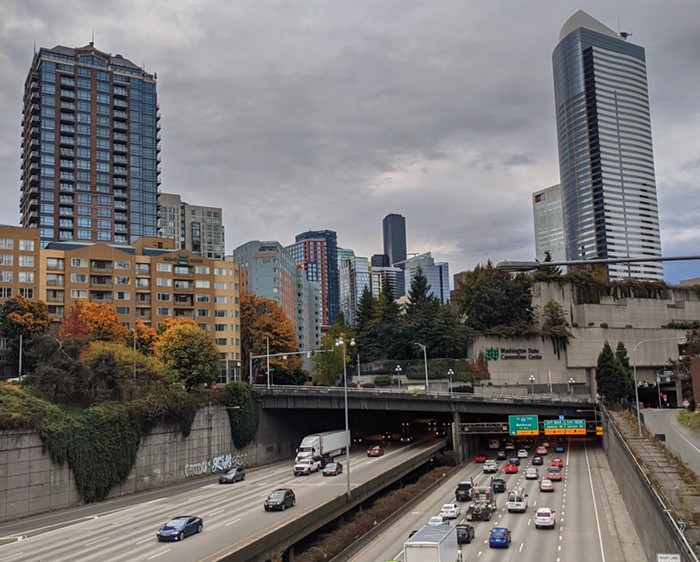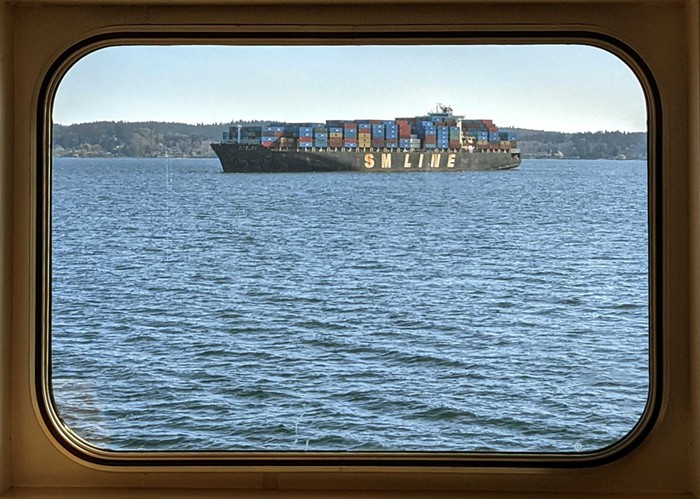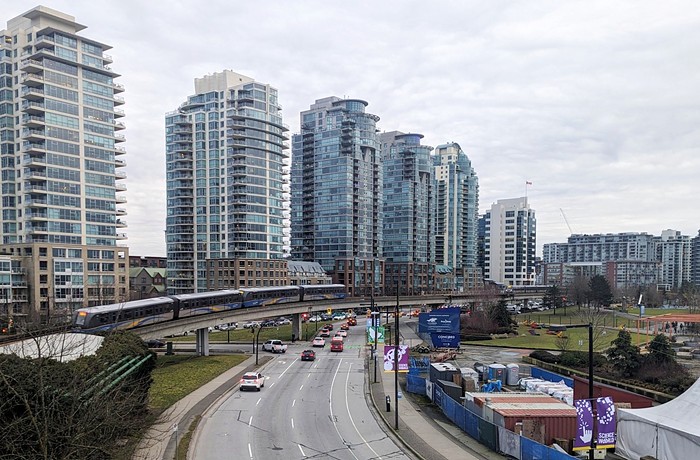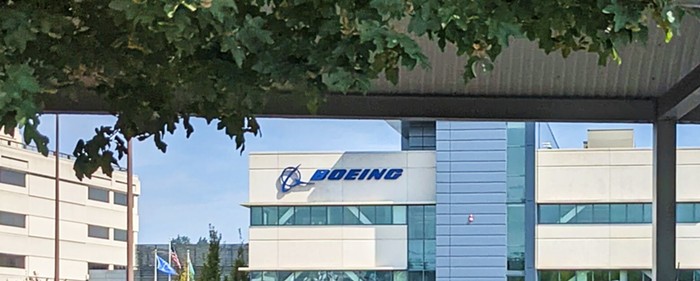
Imagine this—your Tuesday includes a lunch in the Central District, a meeting in Ballard at 2 p.m., and an evening dinner in Sand Point. Navigating a day like this is currently a nightmare—your choice is to either spend well over three hours transferring between buses or get in your car and idle through the Mercer Mess, backups on the Ballard Bridge, and the hell that is NW 65th Street during rush hour.
But what if instead of deciding between a bus and a car, you could navigate this entire route using only light rail? That’s the vision behind a new dreamy transportation proposal put forth by Seattle Subway, a non-profit transit advocacy group. The group is urging leaders to start preparing for a new Sound Transit funding initiative to send to the voters in 2024, and they just released a vision of the ballot initiative that includes five entirely new rail lines.
Their proposal, more of a dream board than transit plan, includes a new circular downtown line around Central Seattle, a new line that runs from South Lake Union due north all the way to Bitter Lake, a new line that would run straight from downtown to the airport, a train from downtown through Madison Valley and across the 520 bridge to Bellevue, and two new east-west routes across north Seattle.
Keith Kyle, the executive director of Seattle Subway, said even though voters approved the Sound Transit 3 ballot initiative in 2016, it’s already time to start planning for Sound Transit 4 if we want it on the ballot in 2024.
“Doing this sort of thing is a heavy lift,” Kyle said. “This is when you have to start doing the work to get everyone to the table to start doing the planning.”
Seattle Subway wants Sound Transit 4 to be a Seattle-only plan, meaning the new projects would be built inside of Seattle and the taxing revenue would come from inside the city limits. The lines are still hypothetical, but Kyle said they specifically made their magical-looking subway map based on rail lines that are feasible.
“We went out of our way to not put anything on the map that is impossible,” Kyle said. “Parts of our map came from the Seattle transit master plan. Part of our map is things that are on the Sound Transit long range plan. And some of it is from community input.”

Seattle Subway wants Sound Transit 4 to be put to voters in 2024 because interest in light rail will likely be peaking that year. By 2024, Sound Transit’s light rail trains will be running north all the way to Lynnwood, south to Federal Way, and east to Mercer Island, Bellevue, and Redmond. Kyle said some Seattleites will likely be feeling a bit overlooked when their busy neighborhoods still lack a train even as other train lines run out to the suburbs.
“I think a lot of people that aren’t on the plan will start to say, why are we not on the plan?” Kyle said. “A lot of really dense and high transit usage areas in Seattle won’t even have funding secured for lines. I think at that point we want to say well, you can be.”
Voters may also be willing to spend a lot more money on transit investments if the trajectory of earlier Sound Transit initiatives continues. Voters denied Sound Transit’s first ballot measure in 1995, which included $6.7 billion in new tax revenue. In 1996 voters approved a cheaper plan, costing only $3.9 billion. In 2008, voters approved Sound Transit 2, worth $18 billion. Then voters approved Sound Transit 3 in 2016, worth $54 billion, the largest tax package in state history, according to HistoryLink. Seattle Subway is betting that voters will approve spending even more money when they finally see a functioning rail system spreading across the metro area.
Sound Transit’s earlier funding measures have always been regional taxes that are set up by the agency’s taxing authority. For a Seattle-centric package the taxes would need to be raised through a different taxing mechanism. Seattle Subway wants the package to be funded through what’s called the Central Transportation Authority (CTA), which was created to fund the Seattle Monorail. The dreams of an extended monorail might be dead, but the authority still has the legal right to raise taxes, including a motor vehicle excise tax.

To use the CTA the city might need to get help from the state. The CTA’s current laws say it can only be used on a monorail project, so Seattle Subway is asking the state Legislature to change that law so it can be used on light rail projects.
That legal change needs to happen before any initiative can go to the voters. And far more detailed plans need to be written up and decided upon before we can get close to having the delightful looking subway system depicted in Seattle Subway's design maps. Kyle said the map might look utopian, but it is still entirely possible.
“The bottom line is that we can get this if we want it. The way to show that you want it is to reach out to your legislator and let them know that you want it,” Kyle said. “That’s the first step of getting this ball rolling.”



















